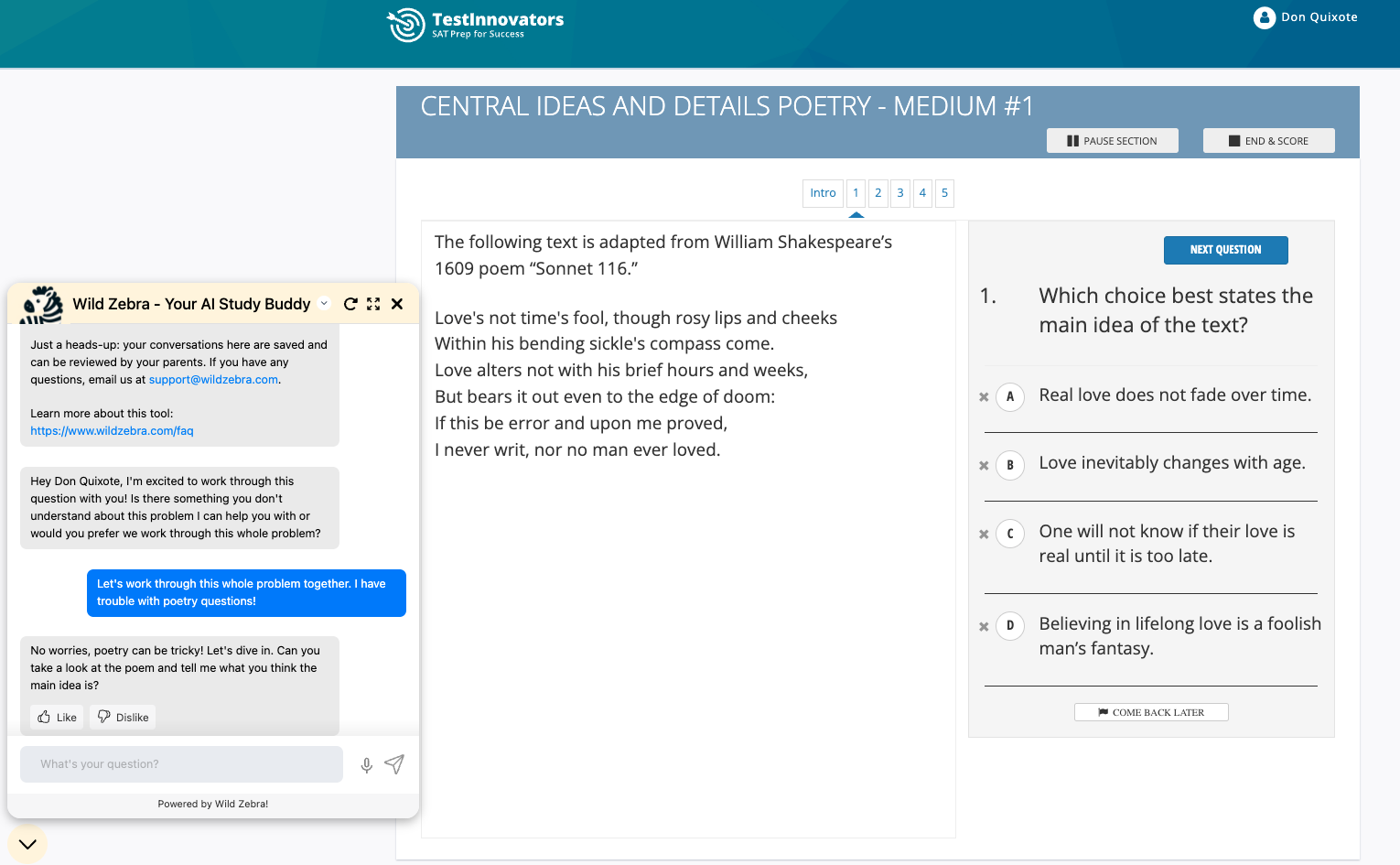Introducing Wild Zebra: Your AI Study Buddy, Now on Test Innovators!
Sophie Brenner2025-12-10T11:54:56-08:00We’ve partnered with Wild Zebra to bring an AI-powered study companion directly into the Test Innovators platform. Wild Zebra supports your learning through interactive, inquiry-driven conversations that help you understand mistakes, think through tricky problems, and build core skills.
Wild Zebra is now available for students practicing for the ISEE, SSAT, ACT, and SAT.
What is Wild Zebra?
Wild Zebra is an AI-powered educational tool that supports students through guided, Socratic-style conversations. By asking targeted questions and prompting students to explain their reasoning, Wild Zebra encourages critical thinking and helps students build core academic skills.
This approach is rooted in the idea that real mastery comes not from simply getting a right answer, but from understanding why that answer is correct. By focusing on a student’s reasoning process, Wild Zebra provides more personalized guidance and helps identify learning gaps.
Test Innovators and Wild Zebra were both founded by Edan Shahar and reflect a shared mission to expand access to personalized, student-centered learning through thoughtful technology.
Wild Zebra is a strategic partner of ERB, the nonprofit educational organization behind the ISEE and CTP assessments.
Learn more at wildzebra.com.
Where You’ll Find Wild Zebra in Your Test Innovators Account
We’ve embedded Wild Zebra in the parts of the platform where guided support makes the biggest impact. Look for the zebra chat widget in the lower left-hand corner of your screen in the following places:
While Reviewing Practice Test Results
After you finish a full-length practice test, head to your test analysis, choose a section, and click “View Your Answers.” You can start a Wild Zebra conversation about any question you answered incorrectly or want to understand more deeply.
In Your Practice Exercises
Wild Zebra is available as you work through targeted practice exercises. It can guide you through tricky questions, help you strengthen specific skills, and support your understanding in real time.

Not During Practice Tests
Wild Zebra is intentionally not available while you are taking a practice test. Practice tests are meant to feel like the real exam, where outside support is not available.
Try Wild Zebra
Your Test Innovators account includes 10 free Wild Zebra conversations to help you get started. If you’d like ongoing support, you can upgrade anytime to receive unlimited access.
Students with an ISEE fee waiver receive full access to Wild Zebra and the complete ISEE practice platform at no cost, as part of our long-standing partnership with ERB. This initiative reflects all three organizations’ shared commitment to expanding access to high-quality learning support for families with financial need.
Get a Closer Look at Wild Zebra
Originally published on June 10, 2025. Updated on December 10, 2025.






